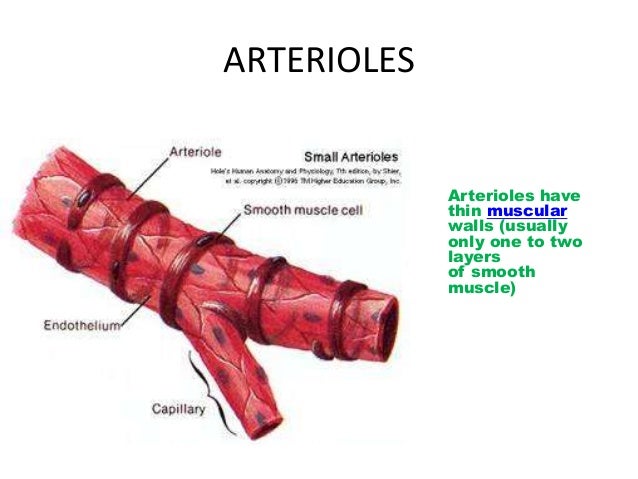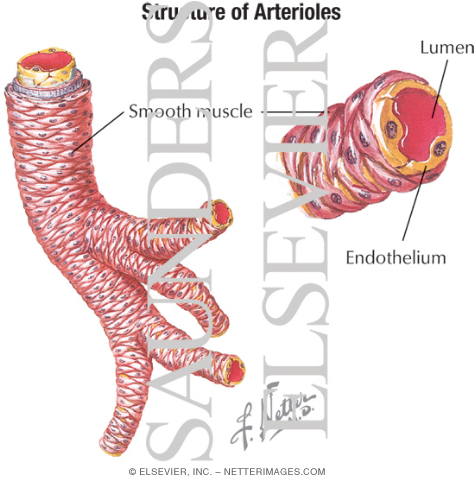Arteriole
Arterioles (Latin Arteriolae, singular arteriole ) are small arteries that are in circulation behind the arteries and in the arterial capillaries. Your venous equivalents are called venules.
Arterioles and venules are the finest, yet visible to the naked eye blood vessels. They can be recognized as a fine tube drawing ( Episcleralgefäße ), for example, to the sclera of the eye.
Design and function
The wall structure of arterioles is similar to that of the arteries, a distinction intima, media and adventitia.
The Media is indeed weak, but the smooth muscles in this middle class is able to completely close the arteriole, which is not the case in larger arteries. This lock ensures that the subsequent capillary bed will not flow through the blood and thereby little stressed tissues and organs are also little blood supply.
In the arterioles, the frictional resistance of the blood is greatly increased, flow rate and blood pressure, however, take off. Functionally, therefore, is referred to as arterioles resistance vessels. Even small changes in luminal width of arterioles a body have a great impact on blood pressure.
Arteriolar have an inner diameter of about 20 micrometers. Some authors define arterioles than those vessels, in contrast to the upstream arteries only a continuous layer of smooth muscle cells possess, while other vessels also on the grounds with two to three layers of smooth muscle cells are already one of the arterioles.










